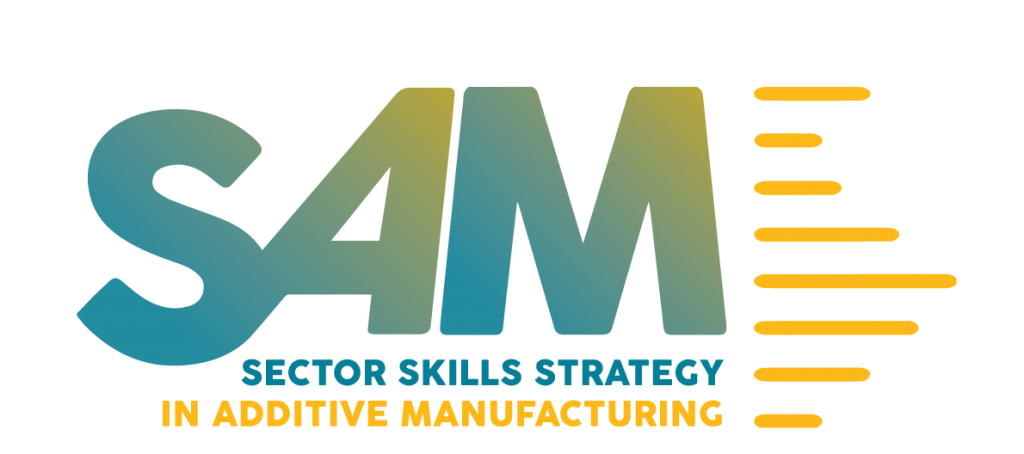PORTO SALVO, 25-Mar-2019 — /EPR INDUSTRIAL NEWS/ — Technology is evolving at a much faster pace than the development of the workers’ skills to use it. Most of the current initiatives and projects that focus on skills shortages are developing skills for existing needs and shortages, meaning that industry is already demanding personnel with those competences. Looking at a bigger picture, it means that there is no strategical approach to skills in Additive Manufacturing and that the current methodology to answer to skills needs is based on reaction instead of prediction and planning. Adding to this, the time between identification of the skills needs and shortages and the capability of deploying qualification/training modules to address them is not aligned with the industry requirements, since in most cases it takes about 1-2 years to create the required professional profile/qualification or competence unit/training module and to have it deployed.
The Wohlers Report 2018 on 3D Printing and Additive Manufacturing states that the overall additive manufacturing industry grew 21% in 2017 as the industry expanded by more than €1 thousand million. According to Ernst & Young, the demand for AM and related services has increased in the last years and is expected that in 2020 the market volume reaches €10 thousand million.
As Europe seeks to retain its leading position in industrial competitiveness, there is an urgent need to establish a platform for Additive Manufacturing (AM) skills at European, National and Regional levels.
To meet this challenge the project Sector Skills Strategy in Additive Manufacturing (SAM) started in January 2019. The initiative will tackle the current European need for developing an effective system to identify and anticipate the right skills for the Additive Manufacturing (AM) sector demands in response to the increasing labour market needs, thus, contributing for the smart, sustainable and inclusive growth of the AM sector
To address the challenges described above the SAM project intends to:
- Build a sector skills strategy in AM;
- Assess and anticipate skills (gaps and shortages) in AM;
- Support with data the AM European Qualification System and foster wideness of its scope;
- (Re) design professional profiles according to the industry requirements;
- Develop specific relevant qualifications to be delivered for the AM Sector;
- Increase the attractiveness of the sector to young people, whilst promoting gender balance;
- Strengthen education-research-industry partnerships and encourage creativity “in companies and relevant educational and scientific institutionsâ€;
- Track students, trainees and job seekers and promote match making between job offer and search.
SAM will promote the AM sector by engaging with different target groups, namely, existing workforce, students from the primary school, vocational education and training and higher education, by putting in place an awareness campaign, stimulating the creativity of the partnership as well as of the audience.
Project partners
SAM project consortium is composed of 16 partners of which EWF is the coordinator. It encompasses industrial representatives from the AM sector, organisations involved in the fields of Vocational Education and Training (VET) and/or Higher Education (HE), and umbrella organisations. The consortium is strongly committed with the aim of supporting the growth, innovation, and competitiveness of the AM sector, since all partners have expertise in manufacturing technology and/or in the provision of education, and all of them are recognised players in the field. This ambitious project has a duration of 48 months and ends on 31st December 2022.
List of partners:
- EWF – EUROPEAN FEDERATION FOR WELDING, JOINING AND CUTTING
- CECIMO – CECIMO – EUROPEAN ASSOCIATION OF THE MACHINE TOOL INDUSTRIES
- FUNDACIÓN IDONIAL
- EPMA – THE EUROPEAN POWDER METALLURGY ASSOCIATION
- MATERIALISE
- GRANTA DESIGN
- RENISHAW
- LORTEK
- MTC – MANUFACTURING TECNHOLOGY CENTRE
- FUNDACIÓN AITIIP –
- ISQ – INSTITUTO DE SOLDADURA E QUALIDADE
- LMS – LABORATORY FOR MANUFACTURING SYSTEMS & AUTOMATION
- UBRUN – BRUNEL UNIVERSITY LONDON
- ECOLE CENTRALE DE NANTES
- LZH LASER AKADEMIE GMBH
- POLIMI – POLITECNICO DI MILANO
SAM project is funded by the European Union’s Erasmus+ (Sector Skills Alliances in VET – Blueprint).
SOURCE: EuropaWire



